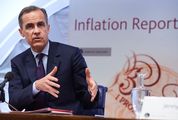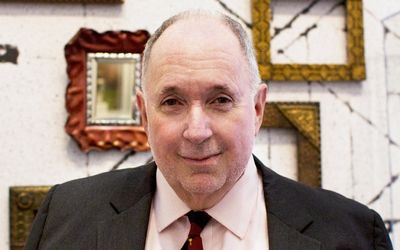THE South African art world is "marvelous", optimistic and vibrant, says American art expert Arnold Lehman.
Lehman, adviser to international fine art auctioneers Phillips, arrived in SA on Sunday to assess the visual arts scene and if and how Phillips should participate in it.
"I don’t want to be a two-day expert," he tells BDLive on Tuesday, "those kind of people should be shot, but from the little that I know there is more (art) infrastructure here in terms of the visual arts, and I think it’s the infrastructure that has disseminated more information about South African art (and put it top of mind in international art circles). There is a great vibrancy, not only from young artists. There are older, more established artists doing things that are equally vibrant."
There appears to be growing interest in South African and African art. Among others, at the moment African art and design are on display in Spain’s Guggenheim Museum in Bilbao until February 21. "Making Africa" then moves to the Centre de Cultura Contemporània de Barcelona from March 22 to July 31.
Also, New York’s annual Armory Show (March 3 -6) has a focus on Africa, with three of the 14 participating galleries South African, and the rest from Addis Ababa (Ethiopia), Nairobi (Kenya), Lagos (Nigeria), Abidjan (Côte d’Ivoire), London, Berlin and Seattle (US).
Last month Hannah O’Leary, head of South African art at international auction house Bonhams, told BDLive the global contemporary art world was excited about the opening of the Zeitz Museum of Contemporary Art Africa at Cape Town’s Victoria & Alfred Waterfront later this year.
German businessman and collector Jochen Zeitz holds what is considered by many to be the leading collection of contemporary art from Africa and its diaspora. He is committing his collection in perpetuity, underwriting the running costs of the museum and providing a substantial acquisition budget to allow the museum to acquire new important artworks over time to remain on the edge of contemporary cultural production, according to his Zietz Foundation.
It would be "very interesting" to see the public reaction to the Armory Show’s focus on African art, says Lehman. "South African art is getting to be viewed as an important aspect of the art world. Still when people in New York or London talk about contemporary art out of Africa, the focus is on SA."
In Johannesburg until Wednesday, Lehman visited as many galleries and museums as he could, including the Johannesburg Art Gallery, the Apartheid Museum, the Museum of African Design and the arts offerings at the Maboneng development that includes artists’ studios, and the beleaguered Museum Africa.
"Driving around it’s a remarkable city. It changes at every corner. Well, not every corner, but it’s a place that seems to encapsulate several places all at once. ...So far I have found everything and everyone optimistic about art, and with a great deal of vibrancy."
He was particularly taken with Arts on Main and the Museum of African Design, in the Maboneng Precinct on the edge of the old city centre. "I’m from Brooklyn, and I had a feeling of it being a little bit of home. The ambience was so diverse, very happily and positively, but, then again, that’s young people. Back home I know it’s the young people who change our community, and that’s the same everywhere."
Phillips has yet to decide whether to open an office in SA, or how it will interact with the South African art scene, and Lehman is reluctant to make any pronouncements. He travels to Cape Town on Wednesday to explore that city’s artistic community, and also to visit the Cape Town Art Fair (February 19-21).
"There has to be a good economic reason to establish ourselves here, but I can say there are a lot of people looking at South African art. I wasn’t at the Venice Biennale (last year), but I am told SA had a positive showing there. Africa is getting viewed as an important new aspect of the art world and SA is certainly a part of that."
Lehman was director of the Brooklyn Museum of Art for 18 years, until last September. During his tenure the museum focused on African American artists and "artists of colour from all over the world". When Lehman took over in 2007 only 17% of the museum’s visitors were "people of colour", despite the general Brooklyn public being predominately African American or from the city’s Caribbean or Latino communities. Six months ago — Lehman left last September — 45% of the museum’s visitors were not white, while "most museums in the US are happy with four or five percent". Also, the average age of the museum’s mostly female visitors dropped from 58-59 to 35 or younger.
"That’s a sea change," says Lehman. The museum is tax-funded, meaning that it belongs to the city in which it exists, he says. "So, it has to reflect our community." Lehman also moved into Brooklyn when he took directorship of the museum — he says he believed he should live within the community it serves.
"I used to tell my colleagues, if there is only one book you read in a year, it should be the census. America is rapidly changing, and if you don’t know how, you’ll quickly be out of business."
Lehman connects the switch in community attitude to the museum to an exhibition staged in the late 1990s that focused on the rising hip hop culture. "We were destroyed in the New York press. People were asking what a serious museum was doing looking at hip hop culture, but hip hop was born in Brooklyn. Well, some people say it was the Bronx)... We were, of course, looking at the visual culture and we had an enormous audience. The more we were criticised, the bigger the audience got."
© BDlive 2015





















Change: -1.41%
Change: -1.70%
Change: -2.26%
Change: -1.13%
Change: -2.49%
Data supplied by Profile Data
Change: -1.25%
Change: -1.14%
Change: -1.41%
Change: 0.00%
Change: -1.25%
Data supplied by Profile Data
Change: 0.01%
Change: -0.25%
Change: -0.08%
Change: 0.22%
Change: -0.33%
Data supplied by Profile Data
Change: -0.09%
Change: -0.53%
Change: -0.39%
Change: -0.40%
Change: -1.00%
Data supplied by Profile Data